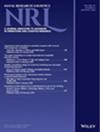竞争性供应链中绿色供应商整合与发展的影响
IF 2.1
4区 管理学
Q3 OPERATIONS RESEARCH & MANAGEMENT SCIENCE
引用次数: 0
摘要
本研究建立了一个库诺博弈模型来研究两个相互竞争的供应链,每个供应链由一个制造商和一个供应商组成,生产和销售可替代的绿色产品。制造商决定是否采用绿色供应商整合(GSI)战略和绿色供应商开发(GSD)投资水平来提高产品的绿色程度。本文分析了不同制造商 GSD 能力和市场绿色度敏感度下 GSD 决策与 GSI 战略之间的相互作用。结果表明,GSD 能力较高的制造商总是会采取 GSI 战略以实现 GSD 投资水平或利润最大化,而 GSD 能力较低的制造商则通过比较两家制造商的 GSD 能力来决定是否采取 GSI 战略。博弈模型从专门采购扩展到多样化采购和混合采购,从而得到两家制造商共同达成的最优采购方案。在这些扩展下,GSI 战略总是能带来更高的 GSD 投资水平,两家制造商采用 GSI 战略成为唯一的纳什均衡战略组合。制造商通过判断不同标准下的 GSD 能力差异来选择不同的采购方案,在弱竞争市场中,当 GSD 能力差距足够大时,制造商会选择混合采购。本文章由计算机程序翻译,如有差异,请以英文原文为准。
Effects of green supplier integration and development in competing supply chains
This work develops a Cournot game model to study two competing supply chains, each consisting of one manufacturer and one supplier, producing and selling substitutable green products. The manufacturers decide whether to adopt the green supplier integration (GSI) strategy and the green supplier development (GSD) investment level to improve the product greenness degree. The interaction between the GSD decisions and the GSI strategies are analyzed with different manufacturer GSD capacities and market greenness sensitivity. The results indicate that the manufacturer with a higher GSD capacity will always adopt the GSI strategy to maximize GSD investment level or profit, and the manufacturer with a lower GSD capacity decides whether to adopt the GSI strategy by comparing the GSD capacities of the two manufacturers. The game model is extended from dedicated sourcing to diversified sourcing and hybrid sourcing to obtain optimal sourcing options jointly reached by the two manufacturers. Under these extensions, the GSI strategy always leads to higher GSD investment levels, and adopting the GSI strategies by both manufacturers becomes the only Nash equilibrium strategy combination. Manufacturers choose different sourcing options by judging the difference in their GSD capacities under different criteria, and choose hybrid sourcing when their GSD capacity gap is sufficiently large in a weakly competitive market.
求助全文
通过发布文献求助,成功后即可免费获取论文全文。
去求助
来源期刊

Naval Research Logistics
管理科学-运筹学与管理科学
CiteScore
4.20
自引率
4.30%
发文量
47
审稿时长
8 months
期刊介绍:
Submissions that are most appropriate for NRL are papers addressing modeling and analysis of problems motivated by real-world applications; major methodological advances in operations research and applied statistics; and expository or survey pieces of lasting value. Areas represented include (but are not limited to) probability, statistics, simulation, optimization, game theory, quality, scheduling, reliability, maintenance, supply chain, decision analysis, and combat models. Special issues devoted to a single topic are published occasionally, and proposals for special issues are welcomed by the Editorial Board.
 求助内容:
求助内容: 应助结果提醒方式:
应助结果提醒方式:


